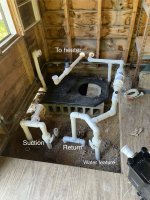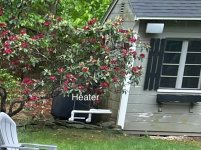Hi All,
We had a new DE filter, Salt system, pump and heat pump heater installed at the beginning of the season and it seems like the pool pump is using way more electricity than I expected.
We have a 22k gallon in ground pool. The pump is a Hayward Superpump XE 1.65HP, running @80% speed for 8 hrs. This is the lowest flow rate we can run if we want to keep the heater and salt generator running.
We turned off the pool heat pump and house AC in September and had only the pump and salt system running until closing at the end of October. After closing the pool our KWh usage in November dropped by 1000 KWh! Does this sound right? Does the salt generator use a lot of power? I’m located in Mass and paying $0.30/KWh so every little bit helps. We moved in last spring and replaced the equipment immediately so I don’t have a baseline power consumption to compare to.
Is it worth switching to a true VS pump with a higher HP rating to lower the energy usage? I read we could run a higher HP pump at a lower speed and maintain a higher flow rate to keep the other equipment active.
Thanks!
We had a new DE filter, Salt system, pump and heat pump heater installed at the beginning of the season and it seems like the pool pump is using way more electricity than I expected.
We have a 22k gallon in ground pool. The pump is a Hayward Superpump XE 1.65HP, running @80% speed for 8 hrs. This is the lowest flow rate we can run if we want to keep the heater and salt generator running.
We turned off the pool heat pump and house AC in September and had only the pump and salt system running until closing at the end of October. After closing the pool our KWh usage in November dropped by 1000 KWh! Does this sound right? Does the salt generator use a lot of power? I’m located in Mass and paying $0.30/KWh so every little bit helps. We moved in last spring and replaced the equipment immediately so I don’t have a baseline power consumption to compare to.
Is it worth switching to a true VS pump with a higher HP rating to lower the energy usage? I read we could run a higher HP pump at a lower speed and maintain a higher flow rate to keep the other equipment active.
Thanks!



